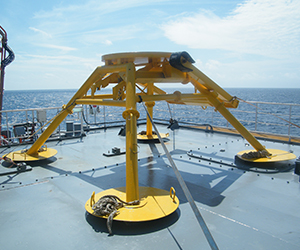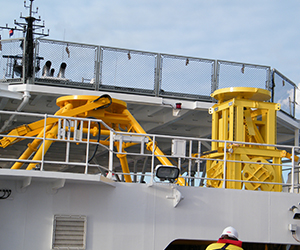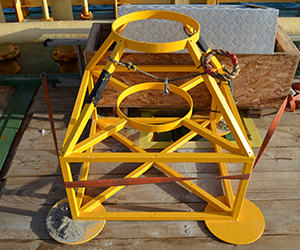- Products
- Commercial divers’ equipment
- Compasses and watches
- Defence divers’ equipment
- Diving instrumentation
- Electrical diving equipment
- Escape and abandonment
- Gas and fluid systems
- Medical and safety equipment
- Recompression chambers
- Submarine intervention
- Submarine rescue
- Tactical Diving Vehicles
- Ansti testing equipment
- Services
- Consultancy and personnel
- Engineering services
- Rescue and support
- Testing services
- Training services
- Ancillary dive gear
- Commercial equipment and tools
- Commercial helmets, masks and SCUBA
- Commercial rebreathers
- Commercial surface supply
- Diver's suits and harnesses
- Contaminated water diving system
- BIBS manifold block
- Divex back pressure regulator
- Divex interlock
- Hy-Fex hyperbaric fire extinguisher
- Hyperbaric flame detector
- Hyperlite hyperbaric stretcher
- Oxygen kits
- Ultralite 2 BIBS mask
- InVicto ventilator system
- DSAR rescue vehicles
- Launch and recovery systems
- Multi-role launch and recovery system
- Submarine rescue bell
- Client representatives
- Dive and ROV system audits
- Diving technical expertise
- Offshore personnel
- Rescue certification
- Remote audit solution
- Altitude testing and trials
- Hyperbaric welding
- Pressure testing and trials
- Test tank
- Breathing laboratory
- Commercial development courses
- Defence training courses
- Medical training courses
- Product specific courses
- Online training courses
- Classroom training FAQ
- Case Study: Roger Chapman Pisces III
- Case Study: HMS Edinburgh
- ANSTI CSTF
- Akademik Tofiq Ismayilov (ATI)
- Archive
- JFD unveils new product concept ‘Stealth Multi-Role’ at key industry events
- JFD North America enhances US Navy Submarine Rescue capabilities with advanced Integrated Communication System
- JFD successfully integrates and delivers advanced submarine rescue system for Republic of Korea Navy
- Local Jobs Boost as JFD Australia's East Coast Expansion Continues
- Archive
- Divulged - Winter 2017
- Divulged - Summer 2017
- Divulged - Winter 2016
- Divulged - Summer 2018
- Divulged - Winter 2018
- Divulged - Winter 2019
- Divulged 2021 Edition 1
- UDT 2019
- Visit JFD at UI 2016
- Visit us at OTC Asia 2018
- Visit JFD on stand 338 at Underwater Intervention 2018
- JFD is exhibiting at ONS 2018
- JFD is exhibiting at OSEA 2018
- Join JFD at IDEX 2019
- See JFD at Subsea Expo 2019
- JFD takes on BALT Military Expo
- JFD presents complete defence offering at UDT 2018 in Glasgow
- Join JFD at ADIPEC 2018
- Visit JFD at Pacific 2017
- Visit JFD at MSPO 2018 in Poland
- JFD presenting at UDT conference
- JFD is exhibiting alongside James Fisher Nigeria at NOG
- JFD exhibiting at UDT 2016
- Visit JFD at Underwater Intervention 2019
- JFD is participating at Underwater Defence & Security
- See JFD at this year’s IMCA Annual Seminar
- JFD is exhibiting at LAAD Defence & Security 2019
- JFD LEXMAR is exhibiting at OSEA 2016
- JFD is exhibiting at Subsea Expo 2017
- Visit JFD at Indo Defence 2018 Expo and Forum
- Visit JFD on stand 403 at Underwater Intervention 2017
- JFD exhibiting at Europoltech
- JFD at IMDEX
- Visit JFD at UDT 2017
- Visit JFD at DSEI 2017
- JFD is exhibiting at OTC 2018
- JFD is exhibiting at Subsea EXPO 2018
- JFD is exhibiting at Sea Air Space 2018
- Visit JFD at DSA 2018
- See JFD at Defexpo 2018
- JFD is exhibiting at ADIPEC 2017
- Come see JFD at DSEI!
- See JFD at IMDEX Asia 2019
- JFD is at Oil & Gas Asia 2019
- Experience DSEI with JFD
- See JFD's full defence capability at MSPO 2019
- JFD is exhibiting at this year's Offshore Europe
- Visit us on stand 2S16 at Pacific
- See JFD at ADIPEC on stand 13572
- Explore our commercial capabilities at Bergen International Diving Seminar
- JFD showcasing commercial and defence capabilities at Underwater Intervention
- JFD exhibiting alongside James Fisher Offshore at Subsea Expo
- Visit our stand at DSEI 2021!
- Join JFD at Subsea Expo 2022
- Visit JFD Australia at Indo Pacific 2022
- JFD North America is exhibiting at SOFIC 2022
- Experience CNE 2022 with JFD
- Discover JFD at UDT 2022
- Join JFD at GSOF Symposium Europe this October

Intervention targets

JFD supplies a wide variety of subsea targets that allow submarine rescue, intervention and ventilation activities to be rehearsed without the need for a host submarine.
Regular submarine intervention and rescue exercises are essential for ensuring equipment and personnel are able to respond effectively in the event of a submarine accident.
JFD understands that requirements for subsea targets vary significantly between nations and for differing operation types.
Regular submarine intervention and rescue exercises are essential for ensuring equipment and personnel are able to respond effectively in the event of a submarine accident.
However, the ability to exercise with live submarine assets is often limited.
JFD can supply a wide variety of subsea targets that allow submarine rescue, intervention and ventilation activities to be rehearsed without the need for a host submarine.
JFD’s mating targets are in service with:
• NATO Submarine Rescue System
• Republic of Singapore Navy
• Royal Australian Navy
JFD understands that requirements for subsea targets vary significantly between nations and for differing operation types. Key design-drivers are depth-rating, mating angle and portability.
JFD's mating target for rescue submersibles is used primarily for the repeated rehearsal of locating and mating with a target at depths of up to 650m, and at angles of up to 60°. JFD’s mating targets are certified by Lloyd’s Register for both hard- and soft-mates, allowing full-skirt de-watering and hatch-openings at maximum depth.
Features of JFD’s mating targets:
• Interchangeable top-plates
• ANEP/MNEP 85 compliant
• Pressure tested under Lloyd’s Register witness and certified
JFD is able to provide targets based on bespoke specifications, taking into account customer requirements for:
• Maximum hard-mate depth
• Long or short-term deployment
• Transport arrangements
Replicating a submarine’s escape hatch, JFD’s ELSS intervention targets allow ROV pilots to train for the delivery and recovery of emergency life support stores. The various targets may be set at angles of up to 60° in depths up to 650m, replicating possible bottoming scenarios, and may also be customised to take into account class-specific configurations.
Submarine ventilation and atmosphere sampling systems each require connection to a submarine’s ventilation connection or high salvage point, a process requiring skill and precision to carry-out safely. JFD’s intervention targets may be configured to allow training for these operations.
| Type | Document | Download |
| Flyer | Intervention and Rescue Targets |
Regular submarine intervention and rescue exercises are essential for ensuring equipment and personnel are able to respond effectively in the event of a submarine accident.
However, the ability to exercise with live submarine assets is often limited.
JFD can supply a wide variety of subsea targets that allow submarine rescue, intervention and ventilation activities to be rehearsed without the need for a host submarine.
JFD’s mating targets are in service with:
• NATO Submarine Rescue System
• Republic of Singapore Navy
• Royal Australian Navy
JFD understands that requirements for subsea targets vary significantly between nations and for differing operation types. Key design-drivers are depth-rating, mating angle and portability.
JFD's mating target for rescue submersibles is used primarily for the repeated rehearsal of locating and mating with a target at depths of up to 650m, and at angles of up to 60°. JFD’s mating targets are certified by Lloyd’s Register for both hard- and soft-mates, allowing full-skirt de-watering and hatch-openings at maximum depth.
Features of JFD’s mating targets:
• Interchangeable top-plates
• ANEP/MNEP 85 compliant
• Pressure tested under Lloyd’s Register witness and certified
JFD is able to provide targets based on bespoke specifications, taking into account customer requirements for:
• Maximum hard-mate depth
• Long or short-term deployment
• Transport arrangements
Replicating a submarine’s escape hatch, JFD’s ELSS intervention targets allow ROV pilots to train for the delivery and recovery of emergency life support stores. The various targets may be set at angles of up to 60° in depths up to 650m, replicating possible bottoming scenarios, and may also be customised to take into account class-specific configurations.
Submarine ventilation and atmosphere sampling systems each require connection to a submarine’s ventilation connection or high salvage point, a process requiring skill and precision to carry-out safely. JFD’s intervention targets may be configured to allow training for these operations.
| Type | Document | Download |
| Flyer | Intervention and Rescue Targets |







